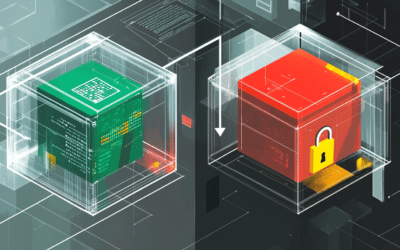
Understanding and Achieving Regulatory Compliance: A Comprehensive Guide
MAR, 2023
by Andrew Walker.
Author Andrew Walker
Andrew Walker is a software architect with 10+ years of experience. Andrew is passionate about his craft, and he loves using his skills to design enterprise solutions for Enov8, in the areas of IT Environments, Release & Data Management.
In today’s world, regulatory compliance is a critical aspect of doing business. Companies operating in various industries, such as healthcare, finance, and information technology, are required to comply with various regulations and standards to protect sensitive information and maintain security. Failure to comply can result in severe consequences, such as fines, reputational damage, and legal actions.
This comprehensive guide aims to provide a clear understanding of regulatory compliance and the steps required to achieve it. The guide will cover different regulations and standards that companies need to comply with, such as HIPAA, PCI DSS, GDPR, and ISO 27001. It will also outline the benefits of compliance and the risks of non-compliance.
This guide is intended for business owners, managers, and employees who are responsible for ensuring their organization is compliant with regulations and standards. By the end of this guide, readers will have a comprehensive understanding of regulatory compliance and the necessary steps to achieve and maintain it.
Risks of Non-Compliance
Non-compliance with regulations and standards can have severe consequences for companies. Here are some of the most significant risks associated with non-compliance:
A. Fines and Penalties: Regulatory bodies can impose hefty fines and penalties on companies that fail to comply with regulations and standards. These fines can range from thousands to millions of dollars, depending on the severity of the violation.
B. Reputational Damage: Non-compliance can harm a company’s reputation and erode customer trust. Negative publicity resulting from a compliance breach can lead to the loss of customers, investors, and business partners.
C. Legal Action: Non-compliance can also result in legal action against the company. This can include lawsuits from affected parties, regulatory investigations, and enforcement actions from government agencies. Legal action can be costly and time-consuming, resulting in significant financial and reputational damage to the company.
Enov8 Platform, Security Compliance Heatmap: Screenshot
Overview of Regulations and Standards
Companies operating in various industries need to comply with different regulations and standards. Here are some of the most important regulations and standards that companies need to comply with:
A. Healthcare: HIPAA (Health Insurance Portability and Accountability Act) is a US law that sets national standards for protecting the privacy and security of individuals’ health information. Covered entities, including healthcare providers, health plans, and healthcare clearinghouses, must comply with HIPAA regulations to protect patient information.
B. Finance: PCI DSS (Payment Card Industry Data Security Standard) is a set of security standards designed to ensure that companies that accept credit card payments maintain a secure environment. PCI DSS compliance is required for all organizations that handle credit card transactions.
C. Information Technology: ISO 27001 is a global standard for information security management systems (ISMS) that provides a systematic approach to managing sensitive information. Compliance with ISO 27001 ensures that a company has a robust information security management system in place to protect its data.
D. General Data Protection Regulation (GDPR): GDPR is a European Union regulation that protects the privacy of EU citizens’ personal data. It applies to all organizations that process EU citizens’ personal data, regardless of where the organization is based. GDPR compliance is essential for companies that handle EU citizens’ personal data.
Achieving Compliance
Achieving regulatory compliance requires a comprehensive approach that includes several key components. Here are some steps companies can take to achieve compliance:
A. Components of a Comprehensive Compliance Program:
- Policies and Procedures: Companies should develop policies and procedures that outline the necessary steps to comply with regulations and standards. These policies and procedures should be reviewed and updated regularly.
- Risk Assessments: Companies should conduct regular risk assessments to identify potential compliance risks and vulnerabilities. These assessments should be used to develop and implement appropriate risk management strategies.
- Employee Training: Companies should provide regular training to employees on compliance requirements and best practices. Employees should be aware of the company’s policies and procedures and understand their role in maintaining compliance.
- Monitoring and Auditing: Companies should regularly monitor and audit their compliance program to ensure it is effective and up-to-date. This can include internal audits and assessments, as well as external audits by third-party auditors.
B. Steps to Achieving Compliance:
- Identify Applicable Regulations and Standards: Companies should identify which regulations and standards apply to their industry and operations.
- Perform a Gap Analysis: Companies should perform a gap analysis to identify areas where their current compliance program falls short of regulatory requirements.
- Develop and Implement a Compliance Program: Companies should develop and implement a comprehensive compliance program that addresses identified gaps and meets regulatory requirements.
- Monitor and Update the Program Regularly: Companies should regularly monitor and update their compliance program to ensure it remains effective and up-to-date.
C: Leverage Tooling
To achieve compliance, companies can also use workflow governance and insight tools, such as the Enov8 Platform. These tools can help companies manage the entire SDLC process, from development to deployment, while ensuring compliance with regulations and standards. The Enov8 Platform provides end-to-end visibility into the SDLC process, enabling companies to identify and address compliance risks early on in the development cycle.
The Enov8 Platform offers a range of features that can help achieve compliance, including compliance dashboards that provide real-time visibility into compliance status across the entire SDLC process, risk management tools that enable companies to identify and mitigate compliance risks at every stage of the SDLC process, automated testing tools that identify compliance issues in the code, and detailed reporting and analytics that help companies monitor compliance status, identify trends, and make informed decisions.
Benefits of Compliance
Compliance with regulations and standards is not just about avoiding penalties and legal action. There are several benefits to achieving compliance, including:
A. Improved Security: Compliance programs require companies to implement security measures and protocols to protect sensitive information. By achieving compliance, companies can ensure that their data is secure from external threats.
B. Increased Customer Trust: Compliance programs demonstrate a company’s commitment to protecting customer data and maintaining security. This can lead to increased customer trust and loyalty.
C. Reduced Liability: By achieving compliance, companies can reduce their liability in the event of a data breach or compliance violation. Compliance programs provide evidence of a company’s efforts to protect sensitive information, which can help reduce liability in legal proceedings.
In summary, achieving compliance has several benefits beyond avoiding penalties and legal action. Compliance programs can improve security, increase customer trust, and reduce liability in the event of a compliance breach. Companies should strive to achieve compliance to protect their sensitive data and maintain customer trust.
Conclusion
Regulatory compliance is an essential aspect of doing business in today’s world. Non-compliance can result in severe financial, reputational, and legal consequences for companies. Understanding and achieving compliance requires a comprehensive approach that includes policies and procedures, risk assessments, employee training, and ongoing monitoring and auditing.
In addition, companies can use SDLC workflow governance and insight tools, such as the Enov8 Platform, to manage the entire SDLC process and ensure compliance with regulations and standards.
While achieving compliance can be challenging, it has several benefits beyond avoiding penalties and legal action. Compliance programs can improve security, increase customer trust, and reduce liability in the event of a compliance breach.
Companies must prioritize compliance to protect their sensitive data, maintain customer trust, and avoid financial and reputational damage. By following the steps outlined in this guide and utilizing the right tools, companies can achieve and maintain compliance with regulations and standards.
Other Leadership Reading
Enjoy what you read? Here are a few more leadership articles that you might enjoy.
Enov8 Blog: Writing a Business Case for the Steering Committee.
Enov8 Blog: A comprehensive guide to Product Lifecycle Management.
Enov8 Blog: What is a Steering Committee. A Technologists View.
Enov8 Blog: The Role of RAG Status in Technology Leadership.
Enov8 Blog: The PPP (People, Process, Product) Framework.
Relevant Articles
Enterprise Architecture Tools: 11 to Be Aware Of in 2025
Enterprise architecture (EA) is an essential discipline for organizations aiming to align their IT strategy with business goals. As companies become more complex and technology-driven, having the right set of EA tools is crucial to streamline operations, improve...
What is a Staging Server? An Essential Guide
Release issues happen. Maybe it’s a new regression you didn’t catch in QA. Sometimes it’s a failed deploy. Or, it might even be an unexpected hardware conflict. How do you catch them in advance? One popular strategy is a staging server....
What is Deployment Planning? A Detailed Guide
Deployment planning, sometimes referred to as "implementation planning," is the process of creating a plan for the successful deployment of a new software or system. It involves identifying the resources, tasks, and timeline needed to ensure that the deployment is...
The Definitive Guide to Test Data Generation
Test data generation is a critical part of the software testing lifecycle, ensuring that applications are tested against realistic scenarios before going live. If you’re not testing against production-like data, you’re arguably not truly testing your application. In...
What is a Test Data Manager? A Detailed Introduction
Testing is a critical aspect of software development, and it requires the use of appropriate test data to ensure that the software performs optimally. Test data management (TDM) is the process of creating, storing, and managing test data to ensure its...
How to Manage Test Data in Software Testing
To compete in today's market, software companies need to create programs that are free of bugs and vulnerabilities. In order to accomplish this, they first need to create test data models specifically for staging environments. Test data sets must be compact,...











